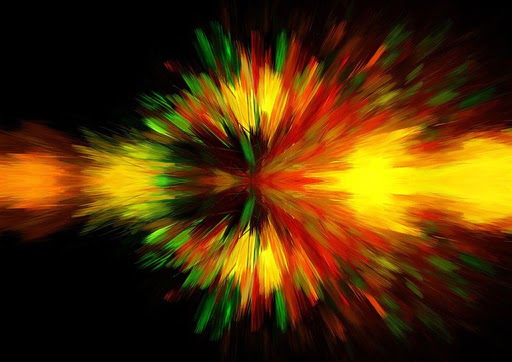A particle accelerator is a large machine that is used to conduct physical experiments involving high-energy, subatomic particles. There are two types of particle accelerators: linear and circular. The main function of a particle accelerator is to increase the speed of particles close to the speed of light using electromagnetic fields and to control these fast particles in well-defined beams.
You have probably come across discussions about particle accelerators, especially in the field of particle physics. They are more significant than they are given credit for! The Large Hadron Collider (LHC), for example, is the largest machine ever built by humans. This astonishing fact might make you wonder… what is it exactly? And more importantly, why should I care about its purpose?
Let’s start with the basics…
What is a Particle Accelerator?
A particle accelerator, in simple terms, is a large machine used for conducting physical experiments with high-energy, subatomic particles. For those with a technical inclination, it is a device that accelerates charged particles to speeds close to that of light using electromagnetic fields and contains these accelerated particles in well-defined beams.
Some of the most well-known particle accelerators include the Large Hadron Collider (operating in ion mode and proton mode), the Relativistic Heavy Ion Collider, Tevatron, J-PARC, BEPC II, etc.
 The Large Hadron Collider at CERN (Image Source: Nasa.gov)
The Large Hadron Collider at CERN (Image Source: Nasa.gov)
Contrary to popular belief, the Large Hadron Collider is not the only particle accelerator in existence. There are actually hundreds of particle accelerators operating worldwide for various purposes, including scientific research, medicine, and even international security. (Source)
What is the Function of a Particle Accelerator?
Particle accelerators can generally be categorized into two types: linear and circular accelerators. Despite their differences in design and operation, their main function remains the same.
 Fermi National Accelerator Laboratory (Fermilab), which houses a circular particle accelerator, is located just outside Batavia, Illinois, near Chicago (Image Source: Wikimedia Commons)
Fermi National Accelerator Laboratory (Fermilab), which houses a circular particle accelerator, is located just outside Batavia, Illinois, near Chicago (Image Source: Wikimedia Commons)
The particle source, such as a hydrogen nucleus, provides the desired particle (e.g. proton, electron, etc.) that researchers wish to accelerate. The particle is then accelerated through a vacuum inside a metal beam tube using powerful electric fields. Once the particle starts moving, strong electromagnets steer and maintain the focused beam of particles in the metal tube, which eventually collides with another beam coming from the opposite direction or a stationary target. It is crucial to maintain a vacuum inside the metal tube because when dealing with subatomic particles traveling at near-light speeds, any obstruction, even air molecules, can be problematic.
To put this concept into perspective, imagine you’re taking a walk and two identical stones suddenly fall in front of you. Being curious, you take the stones home to examine them because they are unusually heavy for their size and have a somewhat alien appearance. However, the stones are so strong that you cannot break them open to see what’s inside.
As a final option, you vigorously strike the stones against each other, and behold! The stones break and their internal fragments fly out!
 An artist’s representation of a collision between particles
An artist’s representation of a collision between particles
Something very similar occurs in a particle accelerator, where tiny and incredibly strong subatomic particles are collided together in a tube to investigate their inner contents (e.g. pions, baryons, mesons, etc.). The distinction, of course, is that these particles are accelerated to nearly the speed of light and are collided together millions of times.
The Higgs-Boson particle, also known as ‘The God Particle’, was discovered in the LHC through the same process after trillions of collisions were performed within the tube.
 A depiction of a Higgs Boson particle created by colliding protons decaying into hadron jets and electrons (Image Source: Wikimedia Commons)
A depiction of a Higgs Boson particle created by colliding protons decaying into hadron jets and electrons (Image Source: Wikimedia Commons)
Colliding two stones together is a very basic analogy, and the actual operation of a particle accelerator is much more complex. For a more detailed explanation, check out this article by CERN, the European Organization for Nuclear Research.
Why Are Particle Accelerators Important, And Why Should You Care About Them?
Based on their photos and how they work, it may appear that particle accelerators are only relevant to bespectacled physicists and lab rats who are obsessed with delving deeper into the study of matter’s nature. However, particle accelerators are actually quite valuable for human society, making them highly desirable.

Particle accelerators, through the production of radioisotopes, aid in the diagnosis of millions of diseases in people worldwide. Additionally, radioisotopes are also utilized to eliminate malignant tissues within the body (e.g. cancer) using microwave linear accelerators.
Particle accelerators also have numerous applications in the industrial sector; they contribute to tightly sealing your milk carton and play a role in the production of chips that make your computer significantly faster than older models. They continue to revolutionize the consumer market by facilitating groundbreaking discoveries at the subatomic level of the most common objects that surround us.
 Particle accelerators assist in the manufacturing of computer chips (Image Source: Wikimedia Commons)
Particle accelerators assist in the manufacturing of computer chips (Image Source: Wikimedia Commons)
All of these benefits of particle accelerators arise from their ability to help us uncover the mystery and power of materials and particles by surpassing what we have accomplished thus far. They have aided our understanding of the universe and the fundamental laws that constitute the essence of our very existence.
All in all, what we ‘do’ know is that particle accelerators are extremely fascinating and have tremendous potential to change the world, but we have not yet discovered all the ways in which they can be utilized. By the way, you should also be aware that according to Stephen Hawking himself, one of the world’s leading authorities on the concept of time travel, a particle accelerator can potentially serve as a time machine.
